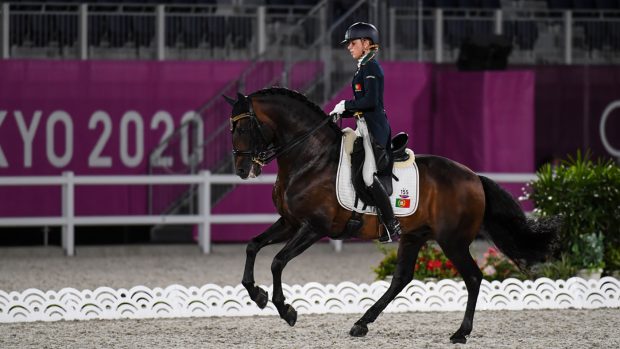Dapple-grey stallions will spring from every doorway, alley and garage, and clatter their way down the darkened streets towards the town centre in Golega this weekend. This small town, 11/2hr north of Lisbon, is the “Portuguese capital of the horse” and celebrates the native Lusitano breed in an annual fair every November.
With fairytale flowing manes and tails, and compact, agile bodies, Lusitanos are your archetypical equine film stars. You will have seen them in Gladiator, Lord of the Rings, the Mask of Zorro and even the Vicar of Dibley to name but a few of their silver screen appearances.
We arrive late on Thursday night but things in Golega are just getting going. On every corner barbecues are sizzling, chestnuts are roasting, and makeshift restaurants are hives of activity. Fresh from protracted dining and drinking, Portugal’s equine movers, shakers and stablehands have donned their traditional dress. The design of their sombre embroidered costumes and wide brim hats dates back to the seventeenth century. Through a veil of smoke, they begin to emerge on horseback, ready to socialise, show off and do business over a glass of vinho tinto.
In the town square the annual focus of activity is a large floodlit sand oval, ringed by a 250m track open to anyone with a horse. To a stream of Latin music — with the occasional interruption from Elton John — the horses and riders exhibit the screeching halts and hairpin turns that they employ so effectively in the city’s bullrings, as well as the elegance of classical dressage to mesmerising effect. The square is lined with wooden horse stalls, and over the weekend of the festival these will be filled with the progeny of Portugal’s finest studs.
Our friends have arrived a few hours before us and have managed to organise a carriage ride for the following day. The days here are less hectic, and we browse the shops for riding equipment, pottery, coats, handbags, and free samples of finest Port, before boarding the carriage for a spin around the track.
The day comprises of breed classes, but any formal entertainment is provided after dark. On the Saturday evening a classical display by the Portuguese National Riding School beckons comparisons with the Spanish Riding School of Vienna. This is followed by the conclusion of a national tournament of “Horseball”. At gallop, the riders must pass to each other and weave towards the goal, with any dropped balls dramatically retrieved by means of swoops to the ground.
Away from the ring the Portuguese make their own amusement. On every street corner crowds are gathered. An accordion player entertains one group who dance and drink oblivious to the chilly air. There are all ages present at the festival, and we visit a disco in a marquee just off the square. As Iberian pop music pumps out, we feel thoroughly outdone by the impromptu flamenco and salsa of the denim clad party-goers. When we finally leave at four in the morning, and drift back to the apartment we have rented in town, there are still horses and riders lapping the town centre track.
If you have a fondness for health and safety, a compelling need for fine cuisine, or an aversion to horses I would not recommend a visit to Golega. Our stay has been a blur of fun and activity, and after three days we are deservedly exhausted. This “Festival of the Horse” is one event that unequivocally lives up to its name.




